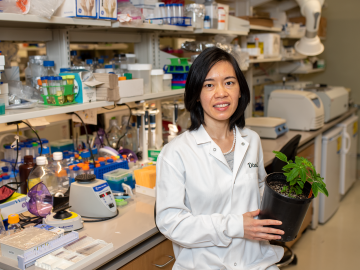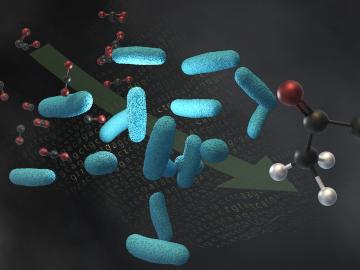
Filter News
Area of Research
- (-) Biology and Environment (30)
- (-) Computer Science (3)
- (-) Materials (55)
- Advanced Manufacturing (2)
- Electricity and Smart Grid (1)
- Energy Science (68)
- Energy Sciences (1)
- Functional Materials for Energy (2)
- Fusion and Fission (6)
- Fusion Energy (2)
- Isotopes (6)
- Materials for Computing (9)
- National Security (21)
- Neutron Science (14)
- Nuclear Science and Technology (6)
- Quantum information Science (3)
- Supercomputing (52)
News Topics
- (-) Artificial Intelligence (10)
- (-) Computer Science (19)
- (-) Cybersecurity (3)
- (-) Energy Storage (23)
- (-) Isotopes (3)
- (-) Materials (28)
- (-) Microscopy (14)
- (-) Security (2)
- 3-D Printing/Advanced Manufacturing (10)
- Advanced Reactors (2)
- Big Data (5)
- Bioenergy (19)
- Biology (30)
- Biomedical (10)
- Biotechnology (4)
- Buildings (2)
- Chemical Sciences (15)
- Clean Water (4)
- Composites (3)
- Coronavirus (10)
- Critical Materials (5)
- Environment (35)
- Exascale Computing (4)
- Frontier (3)
- Fusion (1)
- Grid (5)
- High-Performance Computing (10)
- Hydropower (5)
- Machine Learning (8)
- Materials Science (40)
- Mathematics (1)
- Mercury (2)
- Molten Salt (1)
- Nanotechnology (20)
- National Security (3)
- Neutron Science (16)
- Nuclear Energy (4)
- Partnerships (4)
- Physics (12)
- Polymers (8)
- Quantum Science (6)
- Simulation (2)
- Summit (8)
- Transportation (5)
Media Contacts

Jennifer Morrell-Falvey’s interest in visualizing the science behind natural processes was what drew her to ORNL in what she expected to be a short stint some 18 years ago.

Researchers at ORNL are teaching microscopes to drive discoveries with an intuitive algorithm, developed at the lab’s Center for Nanophase Materials Sciences, that could guide breakthroughs in new materials for energy technologies, sensing and computing.

Miaofang Chi, a scientist at ORNL, has been elected a Fellow of the Microscopy Society of America.

A study led by researchers at ORNL could help make materials design as customizable as point-and-click.

Tackling the climate crisis and achieving an equitable clean energy future are among the biggest challenges of our time.

The rapid pace of global climate change has added urgency to developing technologies that reduce the carbon footprint of transportation technologies, especially in sectors that are difficult to electrify.

A force within the supercomputing community, Jack Dongarra developed software packages that became standard in the industry, allowing high-performance computers to become increasingly more powerful in recent decades.

A team of researchers working within the Center for Bioenergy Innovation at ORNL has discovered a pathway to encourage a type of lignin formation in plants that could make the processing of crops grown for products such as sustainable jet fuels easier and less costly.

A team of scientists from LanzaTech, Northwestern University and ORNL have developed carbon capture technology that harnesses emissions from industrial processes to produce acetone and isopropanol

ORNL, TVA and TNECD were recognized by the Federal Laboratory Consortium for their impactful partnership that resulted in a record $2.3 billion investment by Ultium Cells, a General Motors and LG Energy Solution joint venture, to build a battery cell manufacturing plant in Spring Hill, Tennessee.


